We rarely are more vulnerable than when walking in urban areas, crossing busy streets and negotiating traffic. We all are pedestrians from time to time, so it’s important to pay attention to what is going on around us. In 2021, an estimated 8,984 pedestrians died in traffic and non-traffic incidents, with 7,388 of those killed in traffic crashes on public roads, according to Injury Facts.

LOCATION CONSULTING DESIGN & ENGINEERING DESIGN-BUILD CONSTRUCTION & CONTRACTING AUGUST 2023 VOLUME 17 ISSUE 8 SAFE T Y FIRST. Austin employees have worked 5,703,130 hours without a Lost Time Accident through 06/2023.
IT’S ALWAYS SAFETY FIRST. CONSULT • DESIGN • ENGINEER • CONSTRUCT
THE SAFETY NET
| EHS Today
Take Steps to Avoid Injury or Death While Walking 05.31.2023
ALL AGES ARE VULNERABLE
According to Injury Facts, in 2021, more than 17% of all traffic deaths were pedestrians. Every age group is vulnerable, but the largest number of pedestrian deaths occur among 55- to 64-year-olds (1,343). While children under aged 5 to 9 experienced the fewest number of pedestrian deaths (50) in 2021, these deaths still represented nearly 14% of all traffic deaths for this age group.
Follow these tips to stay safe as a pedestrian:
• Whenever possible, walk on the sidewalk; if no sidewalk is available, walk facing traffic

• Follow the rules of the road, obeying all traffic signs and signals
• Cross streets at crosswalks
• If no crosswalk is available and your view is blocked, move to a place where you can see oncoming traffic
• Look left, right and left again before crossing the street, making eye contact with drivers of oncoming vehicles to make sure they see you
• Stay alert – avoid cell phone use and wearing earbuds
• Avoid alcohol and drug impairment when walking
• Wear bright and/or reflective clothing, and use a flashlight at night
• Watch for cars entering or exiting driveways or backing up in parking lots
• Children younger than 10 should cross the street with an adult
HEAD UP, PHONE DOWN
Distracted walking incidents are on the rise, and everyone with a cell phone is at risk. We are losing focus on our surroundings and putting our safety at risk. The solution: Stop using phones while walking , and not just in crosswalks and intersections. Over half of distracted walking injuries occur in our own homes, proving that we need to stay aware of our surroundings whether indoors and out.
PEDESTRIAN SAFETY IS A SHARED RESPONSIBILITY
When driving, help keep pedestrians of all ages safe :
• Obey all traffic laws, especially posted speed limits in school zones
• Watch for pedestrians at all times and be extra cautious when backing up
• Yield to pedestrians in crosswalks, making eye contact to indicate that you see them
• Never pass vehicles stopped at crosswalks
• Stay alert – avoid distracted driving
• Do not drive under the influence of alcohol and/or drugs
New OSHA Alliance Targets Hazards In Trenching And Excavation
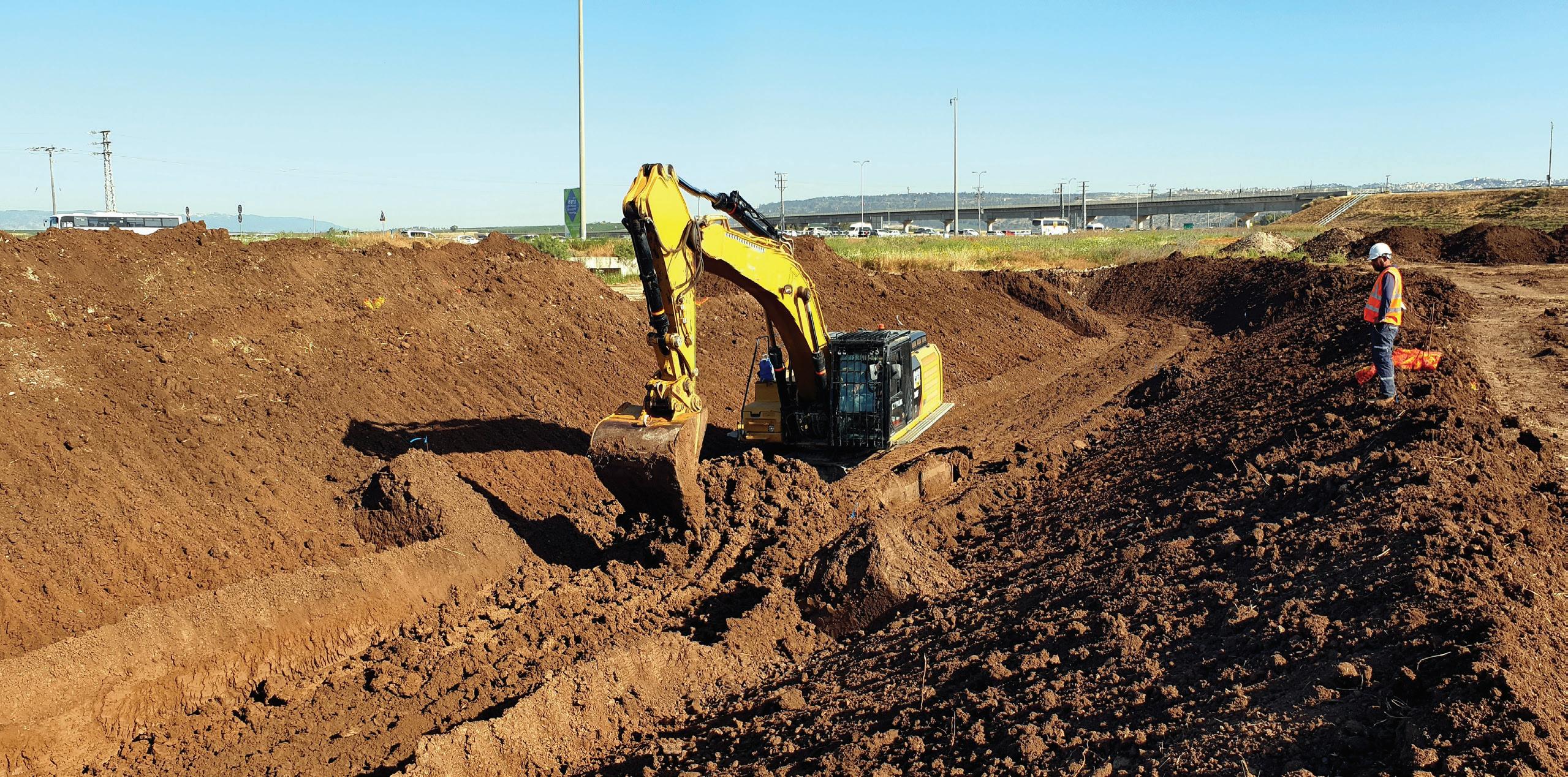
07.10.2023 | Safety + Health
Washington — OSHA is teaming up with a coalition of trade organizations, industry stakeholders and labor unions in an effort to bolster trenching and excavation safety
The two-year agreement between OSHA and the Partners for Safe Trenching and Excavation Operations Alliance unites seven organizations “to address some of the construction industry’s most hazardous work”:
• Associated General Contractors
• Association of Equipment Manufacturers
• Common Ground Alliance
• International Union of Operating Engineers
• Laborers’ International Union of North America
• National Utility Contractors Association
• North American Excavation Shoring Association
OSHA data shows that 39 workers were killed in full/partial trench or excavation cave-ins last year – a sharp spike from the 15 recorded in 2021. That increase spurred the agency to launch enhanced enforcement initiatives last July.
“OSHA will partner with alliance members to develop guidance and other resources,” an agency press release states. “The alliance also will assist small and medium-sized organizations. In addition, the alliance will encourage industry stakeholders to incorporate equity and worker voice into its outreach and activities to help connect as many workers as possible with important worker safety and health information.”
The alliance will develop resources on the recognition and prevention of the construction “Focus Four” hazards : falls, caught-in or caught-between, struck-by objects, and electrocutions. Additionally, it will seek to reduce workers’ hazardous exposures to noise and silica.
3
SLC 2023 Preview: Handling OSHA Inspections
07.13.2023 | EHS Today
Once OSHA comes knocking, everything you do needs to be carefully thought through. The first steps are to know your rights—and how to mitigate potential risks.
It’s inevitable that you will have to deal with the Occupational Safety and Health Administration (OSHA).
As with most things in life, planning ahead for OSHA inspections will serve you well. It’s true you may still be cited, but having a current and well-practiced playbook will almost certainly guarantee a more favorable outcome with your organization.
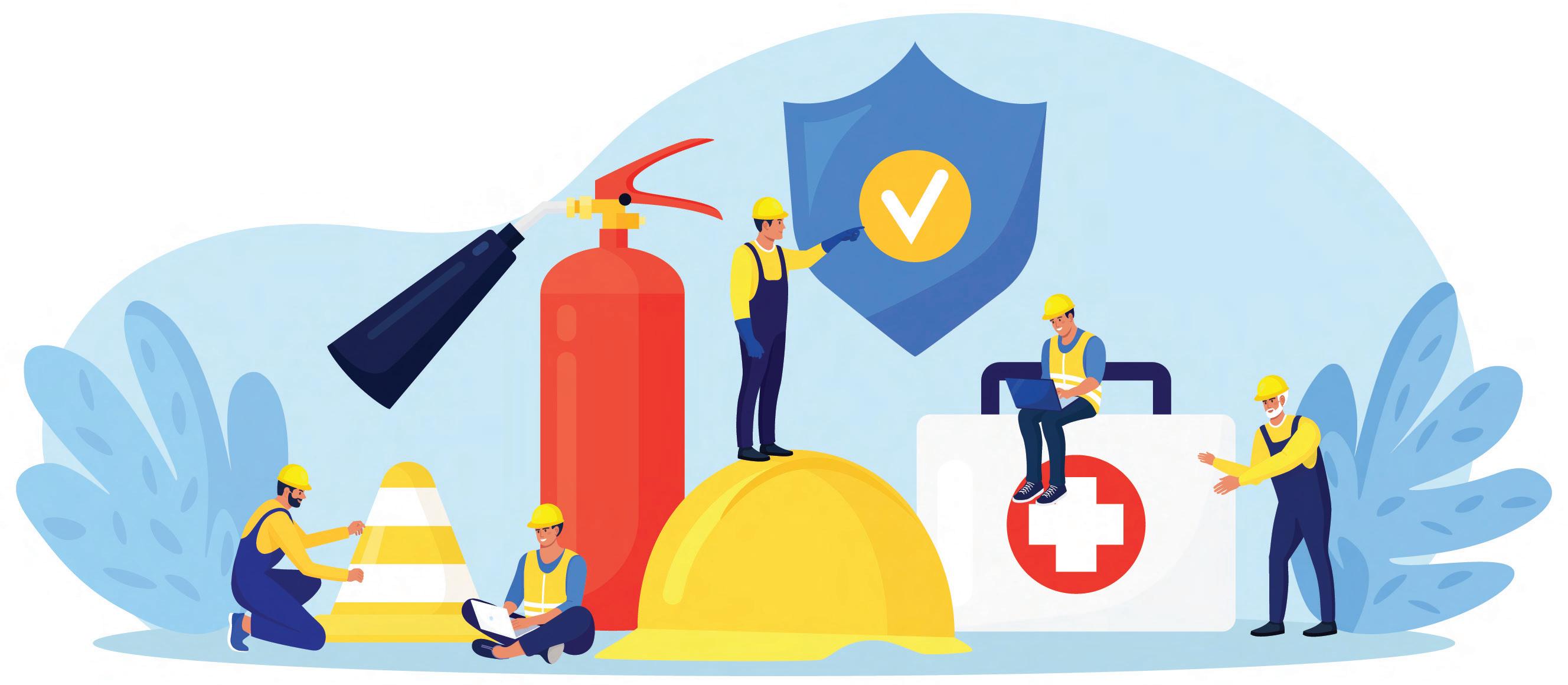
EHS Today spoke with Micah Dickie, a litigator for Fisher Phillips based in Atlanta. As a member of Fisher Phillips’ Workplace Safety and Catastrophe Management Practice Group, Dickie represents clients during inspections and defends them during contested OSHA matters.
Dickie will offer guidance on preparing for those dreaded OSHA visits at the 2023 Safety Leadership Conference, being held in Orlando, Fla., from Sept. 18-20. He will also talk about Fourth Amendment concerns and OSHA’s burden of proof to sustain a citation, if issued. More information about the conference, including registration, can be found here Below is a preview of what to expect from his presentation.
EHS Today: Let’s say OSHA’s at the door. What’s the first thing safety professionals should do?
Dickie: Refer to the written plan the company put in place ahead of an OSHA inspection. First steps in such a plan would, after checking the OSHA inspector’s credentials, involve:
1. Asking OSHA to wait in a conference room or office for a reasonable period of time until the company attorney or other designated contact can also participate in an opening conference with OSHA to discuss the reason for OSHA’s visit;
2. If the company reported an accident recently, planning out the route from this initial area to the site of the accident;
3. Sending a team quickly to ensure that no hazards are in plain view of the route OSHA will travel to the area of the accident;
4. Ensuring OSHA logs are available and accurate upon OSHA’s request; and
5. To the extent possible, limit the use of powered industrial trucks (PITs) and lockout/tagout (LOTO) work on the route where OSHA may observe them.
WHAT SHOULDN’T SAFETY PROFESSIONALS DO?
They should not admit any violations when speaking to OSHA, no matter how informal the questions posed. Also, other than OSHA logs and hazard communication documents, they should not provide any documents during OSHA’s first worksite visit.
Instead, they should ask for other documents to be requested in writing. Safety professionals also cannot alter the scene of any accident, and they should not do a complete work stoppage during an OSHA visit. Doing so raises more questions in OSHA’s mind and distracts from the purpose of their visit.
HOW SHOULD SAFETY PROFESSIONALS PREPARE EMPLOYEES IF OSHA WANTS TO ASK THEM QUESTIONS?
Supervisors, leads and managers should not be interviewed on the first OSHA visit, as they can be prepped by the company’s attorney or EHS professional before being interviewed. For non-supervisors, while the company cannot be present during those interviews, the company should apprise those employees that the company is cooperating in the OSHA inspection.
As such, the company must make the employees available for an interview and emphasize that it is the employees’ choice about what to say or not say to OSHA. Lastly, the company should remind the employees of the relevant and recent training that may relate to OSHA’s visit.
WHAT ARE SOME COMMON MISTAKES YOU SEE COMPANIES MAKE WHEN OSHA INVESTIGATES?
Companies make the mistake of confusing cooperation and professionalism with being helpful. One example is telling OSHA things that OSHA has no right to know. OSHA has the burden of proving safety violations against an employer, and it has the authority to investigate workplace safety complaints and accidents. However, OSHA’s authority is limited to the reason for the inspection—for example, the complaint or accident. Employers often discuss items with
OSHA that are wholly unrelated to the reason for OSHA’s inspection. Once that door is open, it is difficult to close it. Similarly, companies allow OSHA to walk through areas it has no right to access and to speak to supervisors without first understanding the legal ramifications of any admissions by those supervisors on the employer once a citation is issued. Any statement made by an EHS professional or supervisor that admits a safety violation can result in tens or hundreds of thousands of dollars in penalties from OSHA.
WHAT RIGHTS AND PROTECTIONS DO COMPANIES HAVE?
OSHA inspections are governed by the Fourth Amendment, so companies have rights related to their property. Without a warrant, any inspection is based on the company’s cooperation during the inspection.
If OSHA will not stick to the scope of discussion agreed to during the opening conference, the company should object and insist on limiting the area OSHA sees to the area discussed in the opening conference. Legal counsel can be key in ensuring that an employer’s Fourth Amendment rights are preserved, as once these protections are waived, the damage to the company may be difficult to mitigate.
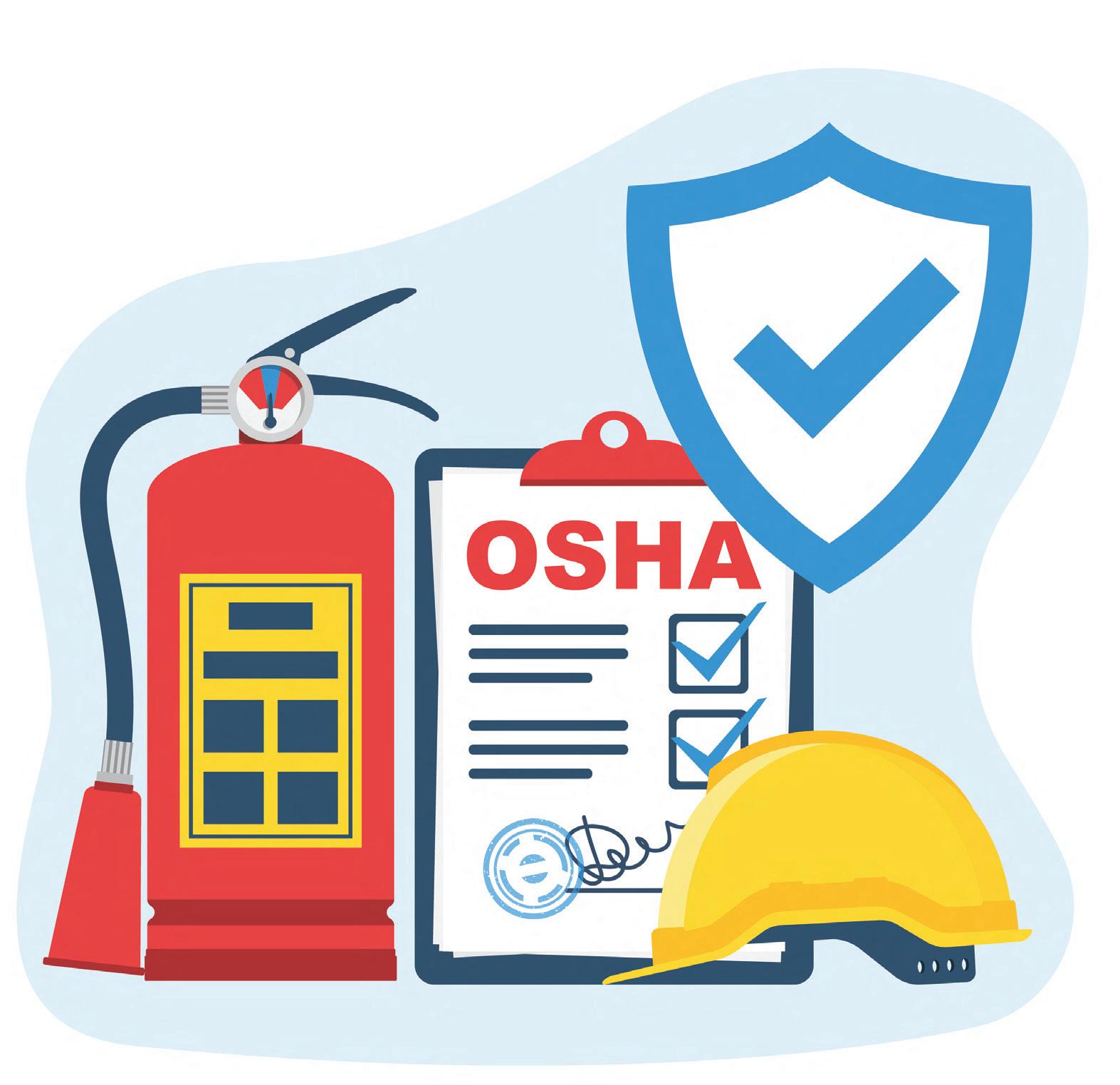
5
Safety
Spotlight: Have Fun – and Stay Safe – in the Sun
07.2023 | National Safety Council
Summer is a season of fun – from splashing in the pool and grilling outdoors to taking trips to new places. But, like all times of year, it also carries safety risks. As covered this National Safety Month, warmer temperatures can make work more dangerous for employees. Construction and added traffic on the roads ramp up the risks of crashes, injuries and fatalities. And outdoor leisure activities such as swimming and fireworks can pose dangers to families. Take some time this summer to learn more about summer
TIPS FOR NAVIGATING WORK ZONES
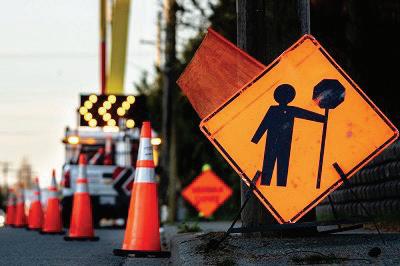
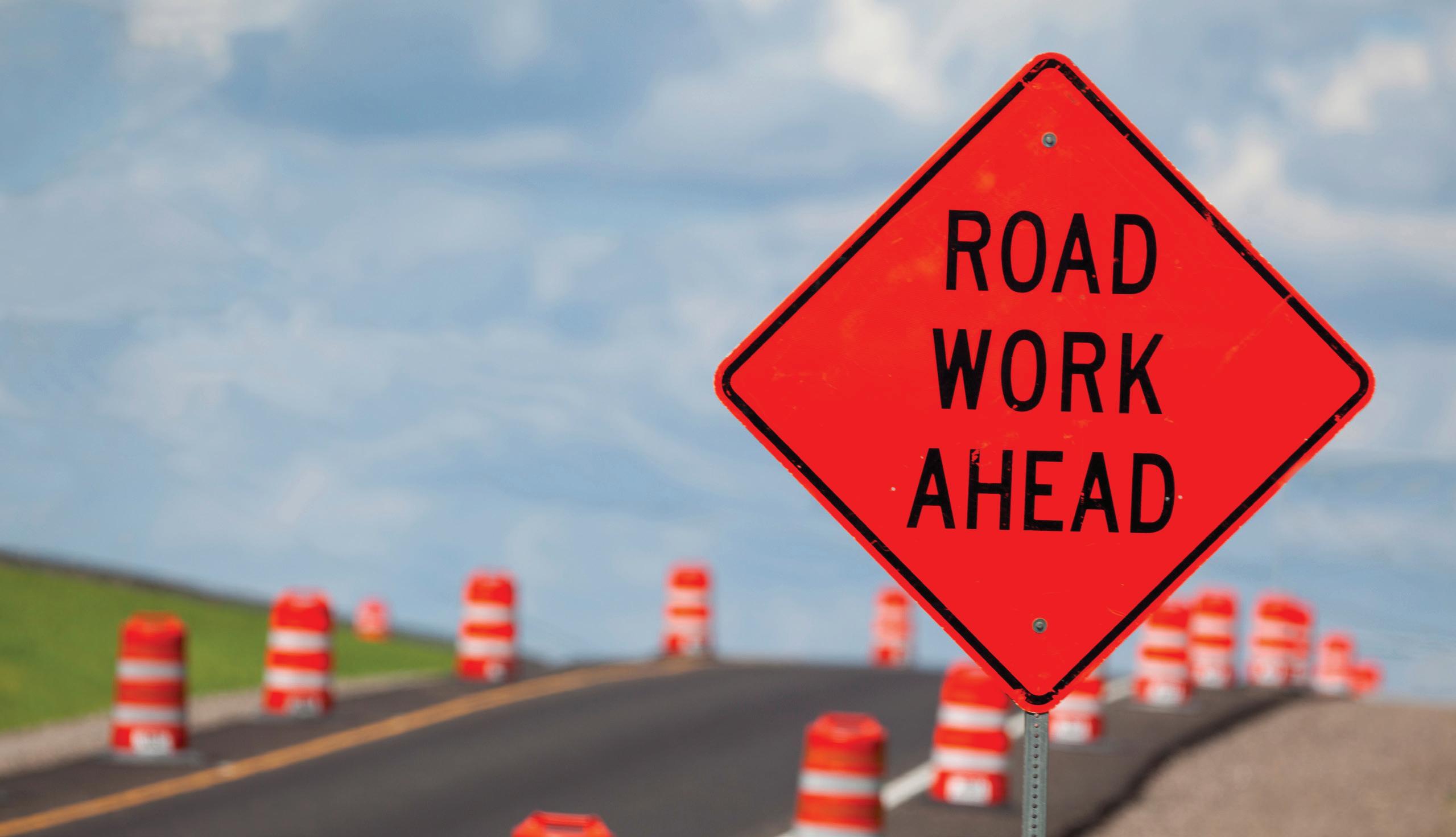
Whether driving for work or on your leisure time, you’ll likely notice more and more construction zones as you move around in warmer weather. While these work zones may seem like a hassle, following safety rules while driving through construction is crucial. According to Injury Facts , 954 people were killed and over 42,000 injured in work zone crashes in 2021.
When driving in a work zone, follow these tips to ensure you keep yourself and others safe:
• Plan ahead and research your route to find work zone and detour locations
• Pay attention and keep your eyes on the road at all times – distracted driving is a leading cause of crashes
• Slow down and be sure to give workers extra space
• Move out of closed lanes early
• Keep your distance from other vehicles – rear-end crashes are common in work zones
This National Safety Month highlighted the dangers of heatrelated illness. As temperatures continue to rise, use the poster to refresh your team on the risks of working in the heat and share advice on how to stay safe.
Always be on the lookout for signs of heat-related illness, including a high body temperature, nausea, muscle cramps and fainting. These illnesses are extremely dangerous, especially in the first week of work. According to OSHA, 75% of heat-illness fatalities occur in the first week of work – whether for new or returning employees. Give your workers time to acclimate to heat with frequent breaks and shorter shifts, increasing their time daily by no more than 20%. Supervisors should never push an employee beyond their limits.
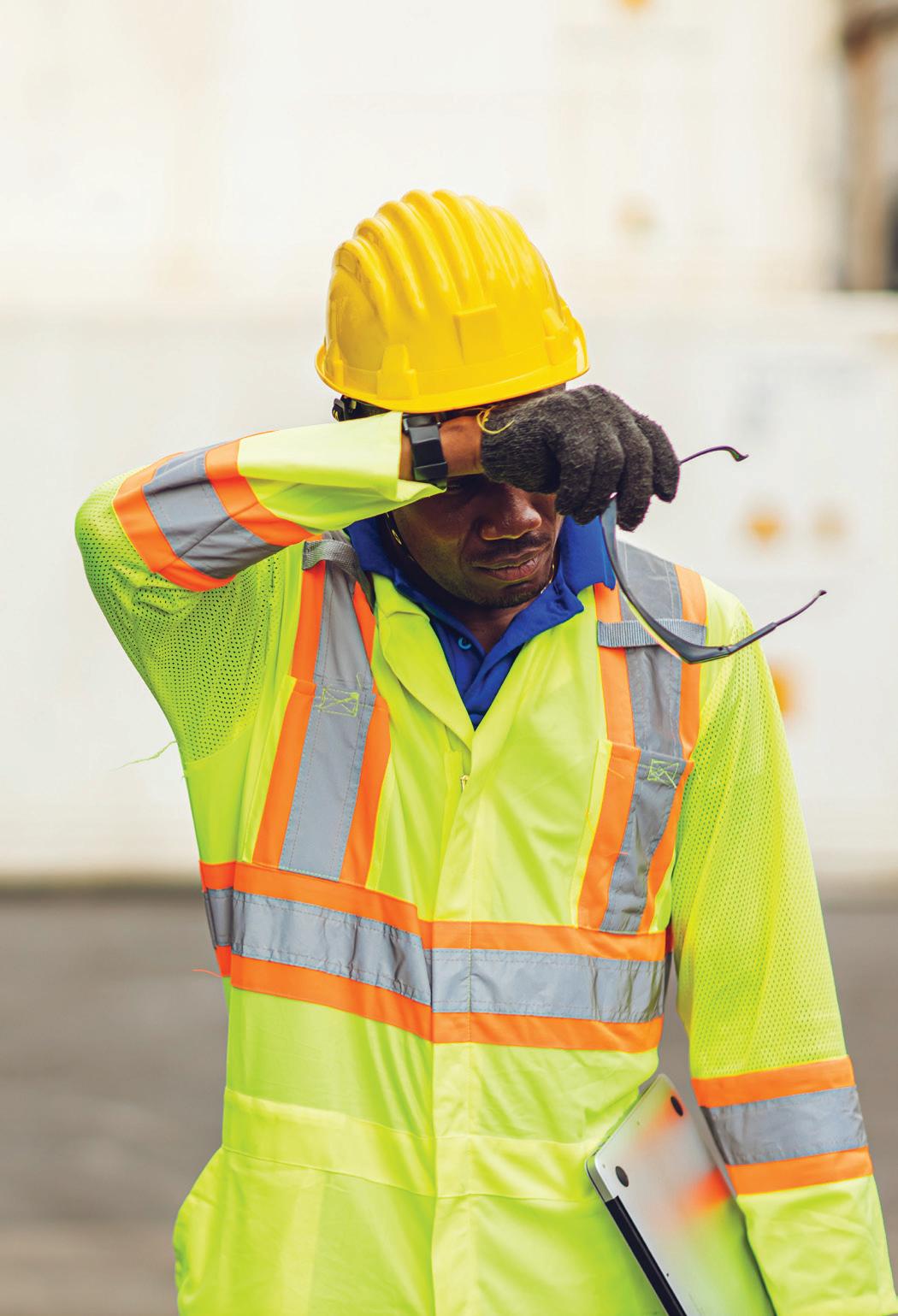
Preventing heat-related illness can also come down to some simple steps – including drinking plenty of liquids, wearing sunscreen and light, protective clothing, and taking regular breaks. To learn more about keeping your workers safe, view the recording of our June 21 webinar , “A Panel Discussion on Working in Extreme Heat.”
And if your organization does not yet have a heat-related illness prevention plan, download this NEW template to help you get started protecting your workers from hot weather.
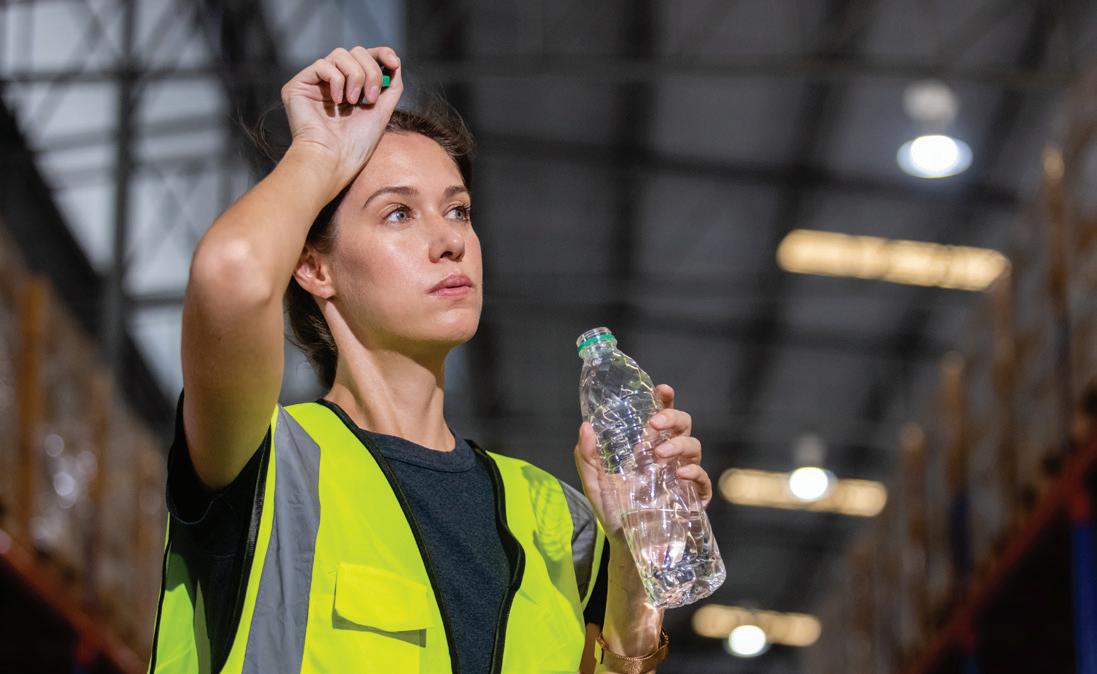
AT-HOME SAFETY
About 78% of all preventable injury-related deaths happen away from work. By speaking with employees about safety at home, you can ensure they remain healthy both on and off the job.
In the summer season many of us spend more
time outdoors. This leads to increased risks – from natural elements such as the sun and insects to activities such as swimming and fireworks. Spreading the word about risks will help your employees always keep safety top of mind.
An average of 10 people die from drowning every day in the United States, according to Injury Facts ®. If you plan to swim in a pool, lake or ocean this summer, be sure to take proper precautions . Have a first aid kit handy and learn CPR and rescue techniques. Know your skill level, and never swim alone. Avoid distractions if you have children swimming with you; drowning is one of the top causes of preventable deaths for children under four.
Fireworks also pose a significant risk of both injury and fire. If you plan to use legal fireworks this summer, be sure to keep them away from small children. Follow safe guidelines to ensure no one is hurt.
For more tips on how to enjoy the outdoors safely this summer, read the latest issue of Family Safety & Health ®
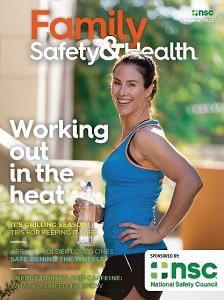
7 BEAT THE HEAT
Summer Safety in the Workplace
07.18.2023 | SAFESTART
Summer is a popular time for employees to take vacations and leave work early to enjoy the nice weather the season brings which changes the dynamic for the employees who are at work during this time.
Staff shortages and the state of mind of the workers left behind to cover the work can create new hazards that compliance measures won’t solve. Other contributing summer hazards include working in the heat, dehydration, and not wearing sunscreen.
This handout can be used in safety meetings, toolbox talks or distributed directly to employees to help maintain safety in the workplace this summer.

Survey Looks at How Collaboration Affects Worker Mental Health
07.03.2023 | Safety + Health
Toronto — Workers who collaborate more often with colleagues experience

fewer mental health challenges than those who prefer to work alone, results of a recent survey show.
TELUS Health in May conducted an online survey of 5,000 U.S. workers. The health care organization assigned point values to each response, creating a mental health index in which higher point values indicated “better mental health and less mental health risk.”
Respondents whose jobs required them to collaborate with co-workers “all the time” had a mental health index score of 72.9. Meanwhile, employees who said they prefer to work alone “most of the time” had a score of 66.7. The national average was 70.9
Nearly half of the respondents indicated they need to collaborate with co-workers some of the time, and that group’s mental health index score (70.5) hovered around the national average. The score for employees who prefer to work alone “some of the time” was 73.3.
The mental health index score for the 15% of the workers who said they don’t collaborate at all, 67.8, was below the national average.
“Positive relationships are an essential buffer for stress,” Paula Allen, TELUS Health’s global leader of researcher and client insights, said in a press release. “This underscores the need for employers to foster a culture that encourages connection and social support.”
9
Mitigating Slips, Trips and Falls in the Workplace
06.22.2023 | EHS Today
Preventative measures and a strong safety culture can help protect workers from slips, trips and falls.
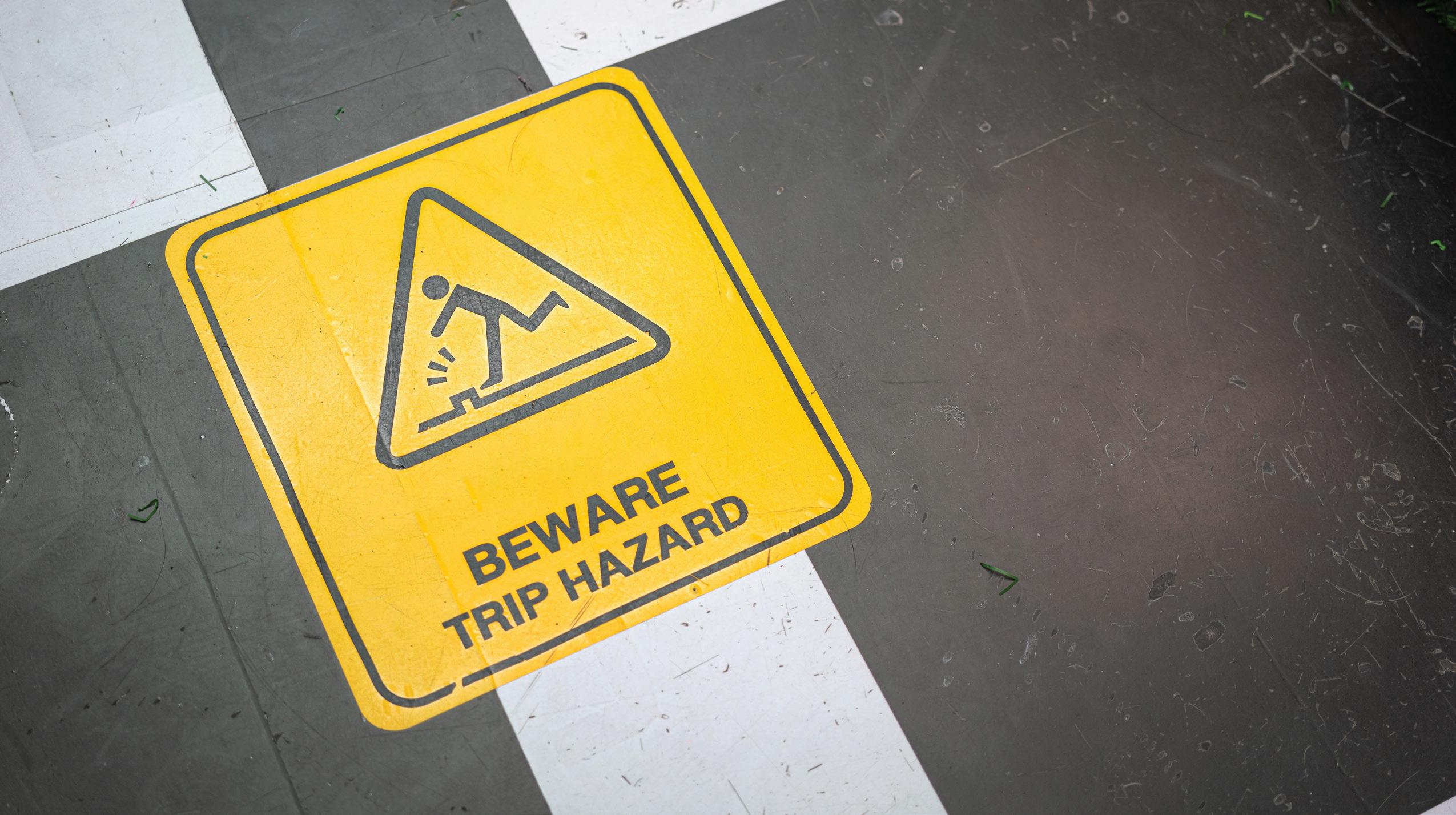
According to the Bureau of Labor Statistics (BLS) , workplace slips, trips and falls were among the top three causes of work-related injuries and lost time and productivity in 2020, along with exposure to harmful substances and overexertion. BLS data showed 22,410 non-fatal occupational slip, trip and fall-related injuries involving days away from work in the manufacturing sector alone. So, it’s no surprise that safety professionals feel pressure to improve on-site and on-the-job safety to prevent workplace accidents and protect their crews.
On average, occurrences of slips, trips and falls result in 14 days of lost work time. That’s a significant loss of productivity and a driver of other significant expenses, such as workers’ compensation claims and training for a temporary replacement to handle absentee workers’ responsibilities. A report from the National Safety Council (NSC) shows the staggering cost of workers’ compensation: Between 2019 and 2020, slips and falls
were the third most costly workers’ comp claims, with an average individual claim of nearly $49,000.
For employers looking to show employees they care about their safety while also aiming to mitigate the increasing costs associated with workers’ compensation claims, individuals in safety management roles must identify potential factors that can contribute to an unsafe working environment and lead to injury. Success is not a by-product of profit alone; it relies on employee satisfaction and engagement, which companies cannot achieve if workers feel unsafe.
TAKE PREVENTATIVE MEASURES
Many of us have walked into an establishment—such as fast casual dining, restaurants, food service facilities and other hospitality settings—and at some point noticed that the floor was wet. In some cases, the floor may have been so wet that simply walking to the bathroom could pose a hazard to safety. Now consider behind the scenes, where the daily demands and hustle and bustle mean consistent cleaning might fall down the list
of priorities as employees focus on other tasks. There is a need to protect employees, as well as visitors, from slipping and falling on these slick surfaces.
Looking beyond hospitality toward industrial sectors— such as food processing, non-food manufacturing, automotive, transportation, warehousing and distribution, and janitorial—the hazards of slipping and falling are significantly higher. In these environments, a slip-andfall incident could be a life-or-death scenario with employees operating heavy machinery, working at great heights, driving forklifts and other vehicles, handling hazardous chemicals, and more.
To prevent the aforementioned cases of dangerous slips, trips and falls, employers should take the following preventative steps in addition to practicing good cleaning habits:
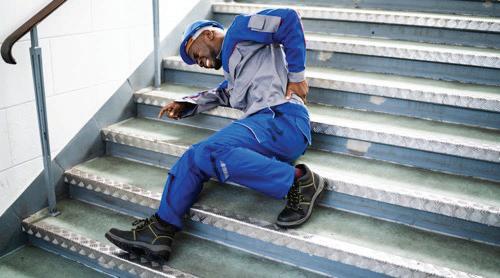
• Place slip-resistant floor mats in areas that consistently get wet.
• Clear high-traffic areas of clutter, such as electrical cords, wires, hoses, boxes and more.
• Minimize elevation changes and ensure ramps, steps and other uneven floor surfaces are clearly marked.
• Ensure stairs are well lit with proper handrails and ladders have proper railings and guards.
• Build a culture that promotes safety and consider strategic safety partnerships.
BUILD A STRONG SAFETY CULTURE
One of the recommended components of the creation of a strong safety culture is the encouragement of safety managers to purchase and ensure proper footwear is worn in the workplace. Providing product solutions for varying environments isn’t just good for the bottom line; it’s also good for individual employees’ health and safety—and for the overall well-being of those who rely on a wage earner, especially in these challenging economic times.
Why are slip resistance and traction such essential factors to consider? Looking at an X-ray of the foot, one can see that the bony structure is shaped like a tripod. This structure must provide support for all of one’s weightbearing activities, a degree of shock absorption and balance. Slips are, by definition, a temporary loss of that balance, and even slips that do not result in falls can result in subsequent injury. Of the 22,410 non-fatal sliprelated injuries cited by the BLS, 3,670 did not result in a
fall. However, those reported injuries still had a significant impact on employers and employees affected by the loss of production time as well as family income.
CONSIDER A STRATEGIC PARTNERSHIP
A corporate safety shoe program, where businesses enter into an agreement with a safety shoe provider, can offer numerous benefits. Such a program is one way for safety managers to ensure individuals get the proper footwear. It’s a sustainable way to reduce workers’ compensation costs and save hundreds of thousands, or even millions, of dollars annually. A lack of protective footwear can lead to serious accidents and incur significant claims. Employers offering partial subsidies could see both increases in participation levels and significant slip and fall reductions.
A safe workplace boosts morale for the entire company because safer employees are more engaged, efficient and productive. Beyond that, when companies are willing to foot the bill for safety footwear, it tells employees that leadership cares about their safety needs. Companies that invest in employee well-being programs can use it as a competitive differentiator to decrease turnover and attract top talent.
RECOGNIZE DIFFERENT WORKING CONDITIONS
Slip-resistant footwear must be able to perform under a wide range of conditions, just as tires require traction to keep one safe when driving a car in varying conditions, such as dry, wet, uneven or “contaminated” road surfaces. There’s no one-size-fits-all approach to slip resistance.
11
Traditionally, slip resistance has been addressed with footwear outsoles that feature multiple, tiny lugs with hard leading edges, which create a high coefficient of friction (CoF)—a measurement of the friction or resistance to motion between two surfaces, and resistance on typical test surfaces in dry and wet conditions. While that works well in many environments, it is not optimal for workplaces with “contaminants” on the flooring surface, such as dairy production environments with cheese fines on the walking surface, bakeries or machine tool shops.
Floor surfaces can vary significantly, so outsole compounds and tread patterns must adapt and demonstrate the ability to expel liquids and debris in the workplace. Safety managers should consider the variety of product options provided when considering a strategic partner for a corporate shoe program.
PLAN FOR SUCCESS
Safety and risk managers continue to face myriad responsibilities in the workplace, including:
• Educating employees on safe practices.
• Conducting environmental audits that assess the potential for risky slips, trips and falls.
• Evaluating workers’ comp claims history and analyzing root causes.
• Implementing and communicating safety measures, such as footwear safety programs.
• Monitoring and incentivizing worker compliance.
Workplace accidents cannot be treated as rare, oneoff events. Instead, leadership must proactively act to mitigate them. Embracing slip-resistant footwear that meets, and exceeds, technical standards is integral to building and maintaining a safe, secure workplace from the top down.
The evidence clearly shows that slips, trips and falls are more common than we’d expect or like to see. An organization-wide shift in how companies prepare for, handle and prevent such incidents is necessary to ensure long-term worker protection.

Workers’ Comp Costs Climb As Heat Index Rises: Report
07.12.2023 | Safety + Health
Raleigh, NC — The longer the heat index remains above 90° F, the more employers may pay in workers’ compensation costs for missed workdays, a recent study of North Carolina workers shows.

Researchers commissioned by the Natural Resources Defense Council analyzed 2011-2018 National Council on Compensation Insurance data for workers in the state. They focused on four industries: agriculture, construction and erection, cartage and trucking, and commercial enterprises.
When the four industries were examined together, findings showed a positive correlation between the annual number of hours with the heat index exceeding 90° F and workers’ comp claim costs for lost wages.
“In other words,” an NRDC press release states, “employers paid employees more during hot years for missed work days due to illness or injury from any cause.”
The correlation “was notably strong” in cartage and trucking, the release adds.
NRDC commissioned the report in part to “advocate for both federal and state workplace heat standards .” According to the council, about 51 million U.S. workers are employed in the six industries with the highest average annual number of heat-related fatalities. However, only around 9 million of them live in states with permanent standards on workplace heat exposure.
OSHA’s proposed rule on protecting workers from extreme heat exposure in indoor and outdoor settings is advancing. An agency spokesperson on June 22 told Safety+Health that OSHA recently initiated a Small Business Regulatory Enforcement Fairness Act panel review , the next step before a proposed standard is published.
“Workers are protected from all kinds of hazards, such as ladder falls and electric shocks,” Juanita Constible, senior advocate for climate and health at NRDC, said in the release. “But federally and in most states – including in North Carolina – there are no such standards protecting workers from heat. That needs to be fixed, and fast.”
13
















